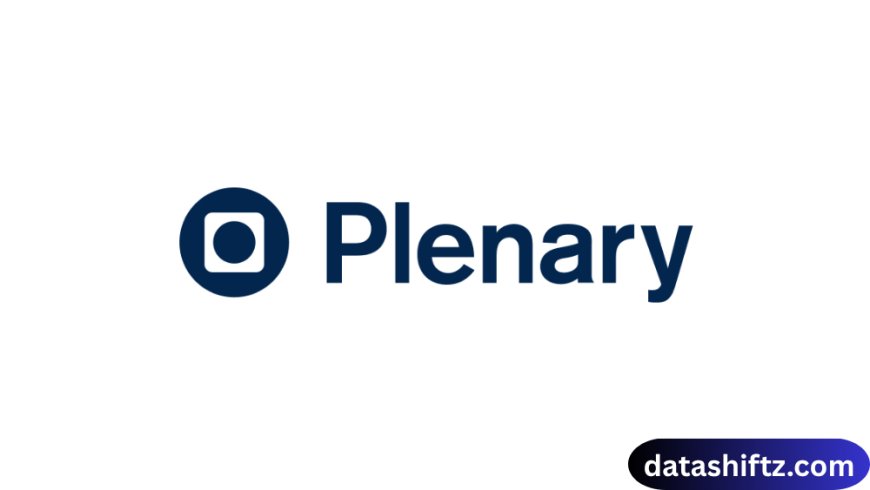Plenary Authority: Understanding the Scope of Complete Power in Governance

Introduction
In political and legal systems across the world, few terms carry as much weight as “plenary authority.” Derived from the Latin word “plenus,” meaning “full” or “complete,” plenary authority refers to the absolute or full power vested in a person or governing body to make decisions within a particular domain without external interference. This concept is fundamental to understanding the separation of powers, constitutional interpretation, and the limits of government control in democratic systems.
Plenary authority manifests in various forms — from the powers of legislatures and executives to the rights of federal and state governments. Understanding its scope, implications, and limitations helps in analyzing how modern governance operates under constitutional checks and balances.
What is Plenary Authority?
Plenary authority represents complete and unqualified power within a specific area of responsibility. When an individual or institution holds plenary power, it means they can act independently without needing further approval or oversight.
In legal terms, plenary authority can be explicitly stated in a constitution, charter, or statute, or implied through judicial interpretation. The concept is often invoked when discussing federalism, executive orders, or administrative control.
For example:
-
In the United States, Congress has plenary authority over matters such as interstate commerce and immigration, meaning its decisions in these areas are considered supreme.
-
In international organizations, the term may describe the comprehensive powers granted to a general assembly or plenary session, where all members have equal voting rights and authority.
Examples of Plenary Authority in Different Contexts
To understand how plenary authority functions, it is crucial to explore its application in various domains of governance and law. Below are several examples:
Legislative Plenary Authority
National legislatures such as the U.S. Congress or Indian Parliament possess plenary authority to make laws within the boundaries of their constitutional framework. This means they can enact, amend, or repeal laws as long as they adhere to constitutional principles.
Executive Plenary Powers
Presidents, prime ministers, and governors often have plenary powers in emergency situations. For instance, during wartime or a national crisis, executives may exercise plenary emergency powers to act swiftly for national security.
Judicial Plenary Power
Courts, especially supreme courts, have plenary authority to interpret laws and ensure constitutional compliance. The Supreme Court of India, for example, has plenary jurisdiction under Article 142 to pass any decree necessary to do complete justice.
Federal and State Powers
In federal systems like the U.S., the term is frequently used to describe the relationship between state and federal governments. Congress holds plenary authority over certain subjects (like immigration), while states have plenary power over internal matters (like education or public safety).
Examples of Plenary Authority in Various Institutions
| Authority Type | Institution/Body | Nature of Plenary Power | Example |
|---|---|---|---|
| Legislative | U.S. Congress | Full authority to make laws on commerce and defense | Commerce Clause powers |
| Executive | U.S. President | Broad authority during national emergencies | Emergency declarations |
| Judicial | Supreme Court of India | Complete authority to enforce justice under Article 142 | Judicial review and orders |
| State Government | Indian State Assemblies | Independent authority over state subjects under Constitution | Education, Police, Agriculture |
| International Organizations | United Nations General Assembly | Equal plenary authority for all member nations | Voting on resolutions and charters |
Legal and Constitutional Basis for Plenary Authority
The legal foundation of plenary authority is rooted in constitutional and statutory law. Governments use this power to ensure efficient decision-making, sovereignty, and uniform policy enforcement.
However, plenary authority is not limitless — it is subject to checks and balances to prevent misuse. Courts often play a key role in interpreting the scope of such authority.
Constitutional Provisions
Constitutions outline where plenary authority lies. For instance:
-
The U.S. Constitution’s Commerce Clause grants Congress full power over interstate and foreign commerce.
-
The Indian Constitution distributes plenary powers between the Union and the States under the Seventh Schedule.
Judicial Interpretation
Judiciaries interpret whether a government body has exceeded its plenary power. Landmark rulings often redefine the scope of such authority, ensuring accountability.
Limitations on Plenary Authority
Even plenary powers are subject to constitutional limitations. For example, executive plenary powers cannot override fundamental rights or due process.
Key Characteristics of Plenary Authority
Below are the main features that define plenary authority in governance and law:
-
Absolute Within Jurisdiction:
The power is complete within a specific field of governance or law. -
Constitutionally Derived:
Usually arises from constitutional or statutory provisions. -
Independent Decision-Making:
Requires no approval from another authority within its domain. -
Accountability Through Judiciary:
Courts ensure that plenary powers are not misused. -
Dynamic Interpretation:
The scope of plenary authority can evolve with legal and social changes. -
Checks and Balances Apply:
Although plenary, the power must still comply with constitutional frameworks.
The Importance of Plenary Authority in Governance
The concept of plenary authority ensures that governing institutions can function effectively without overlapping interference. It provides clarity of power, allowing each branch of government to perform its duties efficiently.
For example:
-
Legislatures can create uniform national policies.
-
Executives can respond quickly during emergencies.
-
Courts can ensure justice without political influence.
Without plenary powers, decision-making could become fragmented, leading to inefficiency and conflict among branches of government.
Balancing Plenary Power and Accountability
While plenary authority ensures autonomy, unchecked power can lead to abuse. Therefore, constitutional safeguards, judicial oversight, and public accountability mechanisms are essential.
In modern democracies, plenary authority works best when combined with transparency and separation of powers, maintaining a healthy balance between efficiency and liberty.
Conclusion
Plenary authority remains one of the most significant concepts in the functioning of modern governments and institutions. It embodies the fullness of power within defined boundaries, ensuring that decisions can be made swiftly and effectively.
However, with great authority comes great responsibility. Whether in the hands of legislatures, executives, or courts, plenary authority must always operate within the spirit of constitutional democracy, justice, and public welfare.






























